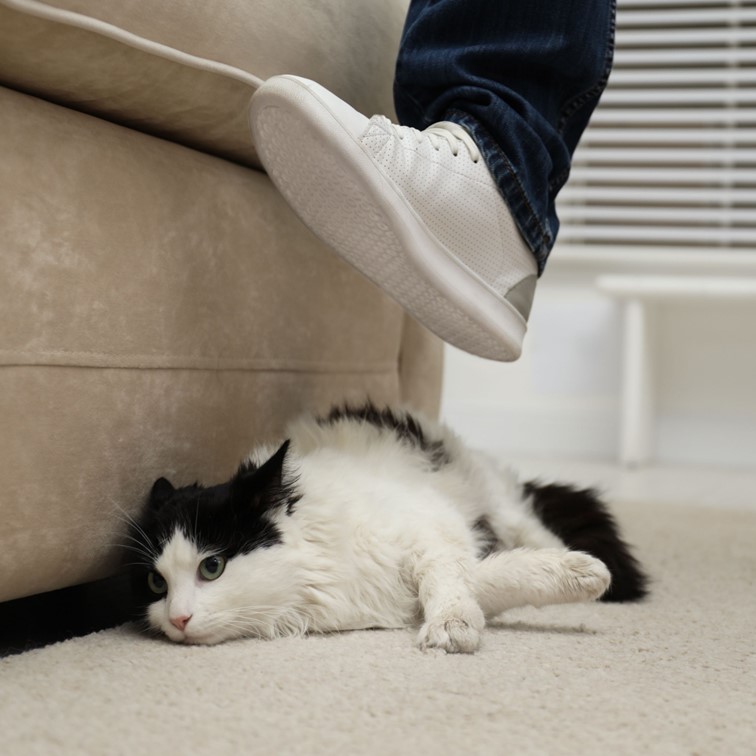The link between animal cruelty and Domestic and Family Violence (DFV) is well researched and yet continues to be an area within the DFV and animal rescue sector that is left behind and sometimes ignored altogether.
As a former RSPCA Inspector and former candidate for the Animal Justice Party, this has been an important political platform for me personally. As an Inspector, I have witnessed the obvious links with DFV when investigating certain cruelty cases. I felt frustrated when I couldn’t offer assistance that would assist both the woman, kids and pets.
In 2005 the RSPCA felt the same and partnered with DVConnect to provide emergency care for pets fleeing DFV. The program aims to provide, on average, 30 days of care (either at RSPCA or with a trained foster carer). This program no doubt offers a tremendous service, and the announcement over the weekend by Attorney-General and Minister for Justice, Minister for Women, and Minister for Prevention of Domestic and Family Violence, Shannon Fentiman that Queensland Labor will be nearly doubling their funding to the program is most welcome and definitely needed. Both Ms Fentiman and the RSPCA have stated that this additional funding would secure more spots for pets in the system and assist with vet costs.
Ms Fentiman said the $200,000 funding will provide places for more than 240 additional pets, almost doubling the program’s capacity. It cares for around 300 animals each year.

I do wonder though, what more the Government could do. I have sat on two DFV boards where I have implemented foster programs for pets. I have started the foster programs based on feedback from women coming into the refuges:
- Getting to RSPCA with their pet can be near impossible, and sometimes there is no help with transportation,
- Women usually arrive at refuges using public transport, which doesn’t allow pets to travel,
- Women find great comfort in their pets, and the idea of being separated from them during a significant life change can be daunting and off-putting,
- The animals do better with their humans; they too are experiencing trauma, and separation from someone they have potentially tried to protect can lead to their own anxiety and stress,
- Research shows that having pets around lowers stress and offers comfort for those going through trauma[i]. The 30 days provided by the Pets in Crisis program is usually not long enough for a woman to have found a place of her own that allows pets, especially now during the rental crisis,
- Women do feel the pressure that at the end of the 30 days, their only other option is usually agreeing to the RSPCA rehoming their animal.
The statistics around pets in DFV situations are horrifying and have continued to rise, so is it time to look more holistically at the issue of DFV. Here are some facts before we delve into what appropriate care of human and animal victims could look like.
- Seventy per cent of women fleeing DFV also report animal abuse[ii].
- Between 18 and 48 per cent of women experiencing DFV failed or delayed leaving their partner due to the fear of leaving their companion animals[iii].
- Sixty-eight per cent of women experiencing DFV failed or delayed leaving their partner if a companion animal had already been abused[iv].
- Nearly 25% of victims will return as their abuser is using the pet to get them back.
There has been a call from leading academics and some law enforcement agencies that abuse of animals should be subsumed under the umbrella of DFV[v]. This is particularly the case in Australia where it is estimated companion animals are present in 70 per cent of cases where DFV occurs. This shows clearly that this is a co-existing problem and provides a strong case for providing different avenues for the care and welfare of both human and animal victims.

Is there an achievable solution and something we should be pushing our Government to invest in now? Yes!
New South Wales now has a few refuges that cater to women, kids and their pets. These refugees have also partnered with local vets to provide low-cost care, and a major pet food company assists with feeding. CEO of West Connect Domestic Violence Services, Catherine Gander, understands that animals are being murdered when victims have left and that the connection between victims and their pets needs to be considered. Gander agrees that this is the way forward for refuges. Unfortunately, Queensland currently has no Government funded shelters that allow pets. When building a new refuge, engaging with DFV organisations during the tender process should be one of the key elements considered.
We should be funding DFV organisations that provide private foster programs. If we are to encourage victims to flee at the first sign of coercive control, we need to have more options for them to do that with those who matter most; kids and pets. The organisations that run private foster care usually receive no funding and operate on donations from sponsors; in some cases, private vets provide urgent care.
The bigger picture requires changes to legislation and a holistic approach to DFV.
- Companion animals remain property under the law. If we take the links between DFV and animal cruelty seriously, we must amend this. Ownership of pets can be used as a method of coercive control, and victims can be made to change ownership of the animal under council laws, vet records etc so that they lose the ability to leave with them. If the victim goes and takes an animal that is technically registered to the offender, offenders can and often do report the pet as stolen property.
- Magistrates need specific training in the links between animal cruelty and DFV so that animal offenders are sentenced accordingly, and the animals are legally placed and handed over to the victim (if required/wanted).
- A national animal offender list has been discussed across enforcement agencies for years. It has been deemed a waste of time while offenders are let off lightly. Still, if we commit to sentencing appropriately, this offender list would assist victims of DFV and agencies within the sector in proving coercive control, abuse, threats and violence.
- Compulsory violence prevention programs in schools that include animals as victims of DFV.
- Find what is working elsewhere and why it is working. The Red Rover Organisation in the USA provides phenomenal funding and options for victims and their animals. The data based on their programs could provide a template for us here. Closer to home, Safe Pets Safe Families provides lifesaving boarding and foster care for animals fleeing DFV with their humans. They have education programs as well as a tried and tested model.
As a community, we should applaud the Queensland Government’s announcement of new funding; however, we need them to look more widely, find the gaps, and read the studies.
I don’t think it is unreasonable to expect that funding goes to different organisations doing sensational work in keeping human and animal victims of DFV safe. However, until our animals are viewed as family members under the law, we will continue to see women stay in DFV situations.
If you or anyone you know needs help, please contact:
- 1800 RESPECT national helpline: 1800 737 732
- Men’s Referral Service: 1300 766 491
- Lifeline (24-hour crisis line): 131 114
- Relationships Australia: 1300 364 277
Sources
[i] O’haire M., Guérin N., Kirkham A. Animal-Assisted Intervention for Trauma: A Systematic Literature Review. Front. Psychol. 2015;6:1121. doi: 10.3389/fpsyg.2015.01121
[ii] Coorey, Lyla and Coorey-Ewings, Carl, Animal Victims of Domestic and Family Violence: Raising Youth Awareness, Animal Studies Journal, 7(1), 2018, 1-40.
Available at: https://ro.uow.edu.au/asj/vol7/iss1/2
[iii] Ascione FR, Weber CV, Thompson TM, Heath J, Maruyama M, Hayashi K. Battered Pets and Domestic Violence: Animal Abuse Reported by Women Experiencing Intimate Violence and by Nonabused Women. Violence Against Women. 2007;13(4):354-373. doi:10.1177/1077801207299201
[iv] Carlisle-Frank, P, Frank, JM, Nielsen L, 2005 Companion animal renters and pet-friendly housing in the US. Anthrozoös, Vol 18, Issue 1, Pages 59-77. http://www.tandfonline.com/doi/abs/10.2752/0892793057855942
[v] Arkow, P, One Health, chapter in Animal Abuse: Helping Animals and People, by Catherine Tiplady (Centre for Animal Welfare and Ethics, University of Queensland).
All images Shutterstock


Latest Comments